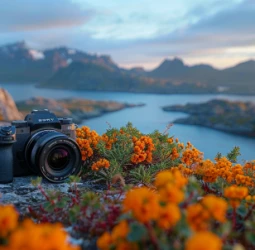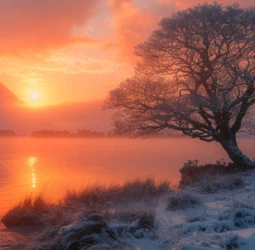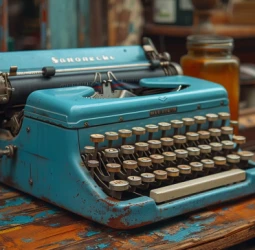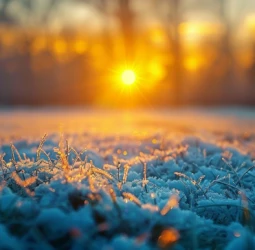Macro photography, also known as close-up photography, is a type of photography that captures small subjects and magnifies them to a life-size or even larger scale. It is a fascinating genre that allows photographers to explore the hidden details of small objects that are often overlooked by the naked eye. From insects and flowers to everyday objects, macro photography has the power to show us a whole new world, revealing the beauty and complexity of the miniature.
If you are new to macro photography, getting started can be a daunting task. The technicalities involved in this genre can be overwhelming, and capturing sharp images with high magnification levels can be challenging. To help you kickstart your macro photography journey, here are some tips and techniques that can assist you in getting stunning macro shots.
1. Invest in a good macro lens
The first and foremost thing you'll need for macro photography is a good macro lens. While any lens can technically be used for macro photography, a dedicated macro lens allows you to focus on a subject at a closer range and achieve better magnification. These lenses come in different focal lengths, such as 50mm, 100mm, and 200mm, giving you the flexibility to choose one that suits your needs. They also have a narrow depth of field, which allows you to isolate your subject and create a beautiful bokeh effect.
2. Use a tripod
When working with high magnification levels, even the slightest movement can ruin your shot. That's why it is essential to use a tripod for macro photography. It will help you stabilize your camera and get sharper images. Additionally, using a tripod allows you to compose your shots more precisely and experiment with different angles without worrying about camera shake.
3. Use manual focus
Macro photography requires precision and control, which is why it is best to use manual focus rather than relying on autofocus. With manual focus, you can choose the exact area you want to focus on and create a sharp image. Also, when shooting in low light conditions, manual focus can be more accurate than autofocus.
4. Be mindful of the lighting
Lighting is a crucial aspect of any photography, and it is no different for macro photography. The key is to find the right balance between light and shadow, as too much light can wash out the details, while too little light can make your subject appear dull. Use natural light whenever possible and experiment with different angles to find the perfect lighting for your subject.
5. Pay attention to the background
The background plays a significant role in macro photography, as it can either enhance or distract from your subject. When composing your shot, be mindful of the background and try to keep it simple and clutter-free. You can also experiment with different backgrounds, such as using colored paper or leaves, to add an interesting element to your image.
6. Get creative with your subjects
While insects and flowers are popular subjects for macro photography, you don't have to limit yourself to them. Look around your surroundings and explore different objects that can make interesting macro shots. You can use everyday items like coins, feathers, or even food items like fruits and vegetables to create unique and captivating images.
Macro photography can be challenging, but with practice and these tips in mind, you can improve your skills and capture stunning macro shots. Don't be afraid to experiment and push your creative boundaries. With time and patience, you will surely develop your own style and master the art of macro photography.
If you are new to macro photography, getting started can be a daunting task. The technicalities involved in this genre can be overwhelming, and capturing sharp images with high magnification levels can be challenging. To help you kickstart your macro photography journey, here are some tips and techniques that can assist you in getting stunning macro shots.
1. Invest in a good macro lens
The first and foremost thing you'll need for macro photography is a good macro lens. While any lens can technically be used for macro photography, a dedicated macro lens allows you to focus on a subject at a closer range and achieve better magnification. These lenses come in different focal lengths, such as 50mm, 100mm, and 200mm, giving you the flexibility to choose one that suits your needs. They also have a narrow depth of field, which allows you to isolate your subject and create a beautiful bokeh effect.
2. Use a tripod
When working with high magnification levels, even the slightest movement can ruin your shot. That's why it is essential to use a tripod for macro photography. It will help you stabilize your camera and get sharper images. Additionally, using a tripod allows you to compose your shots more precisely and experiment with different angles without worrying about camera shake.
3. Use manual focus
Macro photography requires precision and control, which is why it is best to use manual focus rather than relying on autofocus. With manual focus, you can choose the exact area you want to focus on and create a sharp image. Also, when shooting in low light conditions, manual focus can be more accurate than autofocus.
4. Be mindful of the lighting
Lighting is a crucial aspect of any photography, and it is no different for macro photography. The key is to find the right balance between light and shadow, as too much light can wash out the details, while too little light can make your subject appear dull. Use natural light whenever possible and experiment with different angles to find the perfect lighting for your subject.
5. Pay attention to the background
The background plays a significant role in macro photography, as it can either enhance or distract from your subject. When composing your shot, be mindful of the background and try to keep it simple and clutter-free. You can also experiment with different backgrounds, such as using colored paper or leaves, to add an interesting element to your image.
6. Get creative with your subjects
While insects and flowers are popular subjects for macro photography, you don't have to limit yourself to them. Look around your surroundings and explore different objects that can make interesting macro shots. You can use everyday items like coins, feathers, or even food items like fruits and vegetables to create unique and captivating images.
Macro photography can be challenging, but with practice and these tips in mind, you can improve your skills and capture stunning macro shots. Don't be afraid to experiment and push your creative boundaries. With time and patience, you will surely develop your own style and master the art of macro photography.



 admin
admin















